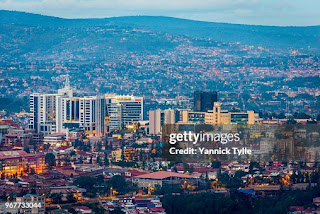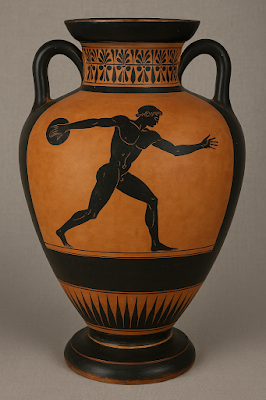Buddhism in Thailand: A Comprehensive Overview
Introduction
Thailand, often referred to as the "Land of Smiles," is renowned not only for its stunning landscapes and rich culture but also for being a deeply spiritual nation where Buddhism is the dominant religion. Over 90% of the Thai population identifies as Buddhist, making Buddhism a central component of Thai national identity, culture, and everyday life. The form of Buddhism practiced in Thailand is primarily Theravāda Buddhism, which emphasizes the teachings of the historical Buddha as preserved in the Pāli Canon.
This essay provides an in-depth exploration of Thai Buddhism: its history, core beliefs, monastic traditions, integration with Thai culture and politics, practices, festivals, and modern-day challenges.
Historical Background
Origins of Buddhism in Thailand
Buddhism is believed to have arrived in what is now Thailand around the 3rd century BCE during the reign of Indian Emperor Ashoka, who sent missionaries across Asia. It gained a stronghold in the region, initially coexisting with other spiritual traditions like Hinduism and animism.
Development Over Centuries
The form of Buddhism that took root in Thailand evolved through different periods:
- Dvaravati Period (6th–11th century): Buddhism flourished in central Thailand, influenced by Indian Mahāyāna and Theravāda traditions.
- Sukhothai Kingdom (13th–15th century): Theravāda Buddhism was officially adopted as the state religion. King Ramkhamhaeng was instrumental in promoting it.
- Ayutthaya Period (14th–18th century): Buddhism merged with royal authority, becoming deeply institutionalized.
- Rattanakosin Period (from 1782 onward): Under King Rama I and successive monarchs, Buddhism was restructured and reformed. The establishment of the Dhammayuttika Nikaya sect by Prince Mongkut (later King Rama IV) brought discipline and purity to monastic practices.
Theravāda Buddhism: The Core of Thai Belief
What Is Theravāda Buddhism?
Theravāda, meaning “Teaching of the Elders,” is the oldest surviving branch of Buddhism. It emphasizes the Four Noble Truths, the Eightfold Path, karma, rebirth, and achieving Nibbāna (Nirvana) through self-discipline, meditation, and insight.
The Pāli Canon
The teachings are preserved in the Tipiṭaka or “Three Baskets” of the Pāli Canon:
- Vinaya Piṭaka – Monastic rules
- Sutta Piṭaka – Discourses of the Buddha
- Abhidhamma Piṭaka – Philosophical and psychological analysis
These scriptures form the theological and practical foundation of Thai Buddhism.
Monasticism in Thai Buddhism
Role of Monks (Bhikkhus)
Monks are central figures in Thai society. They:
- Lead religious ceremonies
- Offer spiritual guidance
- Serve as teachers
- Preserve Buddhist texts and teachings
Becoming a monk is considered a noble act. Most Thai men ordain as monks—if even temporarily—during adolescence or early adulthood.
Daily Life of a Monk
A typical day includes:
- Alms round (Pindapata): Monks walk barefoot in the morning collecting food from laypeople.
- Chanting and meditation
- Scriptural study
- Teaching Dharma
Monks follow 227 Vinaya rules, including celibacy, poverty, and simplicity.
The Sangha: Organized Monastic Community
The Sangha is the collective term for the monastic community. In Thailand, it is state-regulated and divided into two main orders:
- Maha Nikaya: The larger, more traditional sect.
- Dhammayuttika Nikaya: A reformist sect emphasizing stricter adherence to Vinaya.
The Supreme Patriarch (Sangharaja), appointed by the king, is the highest-ranking monk and spiritual head of Thai Buddhism.
Buddhism and Thai Culture
Wai Phra: Daily Worship
Wai Phra refers to the practice of paying respect to Buddha images, monks, and temples. Thai Buddhists often:
- Offer incense, candles, and flowers
- Chant Pāli verses
- Meditate in front of images of the Buddha
Temples (Wats)
Thailand is dotted with over 40,000 temples (wats), which serve as religious, educational, and community centers. Famous examples include:
- Wat Phra Kaew (Temple of the Emerald Buddha)
- Wat Arun (Temple of Dawn)
- Wat Pho (Reclining Buddha)
Temples often include:
- Viharn – Assembly hall
- Ubosot – Ordination hall
- Chedi or Stupa – Relic shrine
- Sala – Resting pavilion
Symbols and Rituals
Buddhist symbols include the lotus flower (purity), wheel of Dharma, and Bodhi tree. Common rituals:
- Lighting candles and incense
- Pouring water to transfer merit to ancestors
- Making donations for good karma
Festivals and Religious Holidays
Makha Bucha Day
Celebrated on the full moon of the third lunar month. It commemorates a spontaneous gathering of 1,250 monks who heard the Buddha's sermon.
Visakha Bucha Day
The most important Buddhist festival, celebrating the birth, enlightenment, and death (Parinibbāna) of the Buddha.
Asalha Bucha Day
Marks the Buddha's first sermon, the “Dhammacakkappavattana Sutta.”
Khao Phansa
Beginning of Buddhist Lent, during which monks stay in one monastery for three months of the rainy season.
Loy Krathong
Though not strictly Buddhist, this festival honors the water goddess and often includes merit-making.
Merit-Making (Making Good Karma)
Making merit (tham bun) is a vital practice. It includes:
- Giving alms to monks
- Donating to temples
- Observing precepts
- Releasing animals
- Attending sermons
Laypeople believe merit brings prosperity in this life and favorable rebirths.
Buddhism and Thai Politics
Buddhism is closely intertwined with Thai politics. The Thai Constitution recognizes Buddhism as the religion of the majority and grants it special protection. The King is required to be a Buddhist and is regarded as a Defender of the Faith.
Throughout history, Thai kings have played major roles in promoting Buddhism and using it to legitimize their rule. Temples received royal patronage, and monks often advised kings.
Challenges and Modern Issues
Declining Monastic Enrollments
Urbanization and modernization have led to fewer young Thais becoming monks. The traditional practice of temporary ordination is also declining.
Scandals and Corruption
Some temples and monks have been involved in scandals related to financial mismanagement and misconduct, leading to public criticism and calls for reform.
Commercialization of Religion
Tourism has commercialized some sacred sites. Amulets, fortune-telling, and donation schemes sometimes dilute spiritual authenticity.
Secularization and Youth Engagement
Younger Thais are increasingly secular or spiritual-but-not-religious. Efforts are being made to make Buddhist teachings more relevant through meditation retreats, digital apps, and youth programs.
Meditation and Mindfulness in Thailand
Meditation is a core practice of Thai Buddhism. Two main types:
- Samatha (Calmness): Focuses on mental concentration and tranquility.
- Vipassanā (Insight): Cultivates insight into the true nature of reality (impermanence, suffering, non-self).
Thailand is home to renowned meditation centers such as:
- Wat Pah Nanachat (international forest monastery)
- Wat Suan Mokkh (founded by Buddhadasa Bhikkhu)
- Dhamma retreat centers under the S.N. Goenka tradition
Mindfulness and meditation are also integrated into schools, workplaces, and even prisons.
Role of Women in Thai Buddhism
Although nuns (Mae Chi) exist in Thailand, they are not officially recognized as bhikkhunīs (fully ordained nuns) under the current Sangha structure. However, movements are growing to restore the Theravāda bhikkhunī lineage.
Women also play significant roles as lay supporters, temple volunteers, and educators of Buddhist ethics in homes and schools.
Influence on Art and Architecture
Buddhism has profoundly shaped Thai art and architecture:
- Murals depicting Jataka tales and Buddha’s life
- Golden stupas and pagodas
- Statues of Buddha in various postures (sitting, walking, reclining)
- Monastic robes and alms bowls as aesthetic and spiritual symbols
Conclusion
Buddhism in Thailand is more than a religion; it is a way of life. From birth to death, Thai people engage in rituals, festivals, and beliefs shaped by Buddhist principles. Despite modern challenges, Thai Buddhism continues to evolve—preserving its core teachings while adapting to changing times.
The serene presence of saffron-robed monks, the sound of chanting in temples, and the ubiquitous images of the Buddha are constant reminders of Thailand’s deep spiritual heritage. As the country strides into the future, Buddhism remains a guiding light—offering wisdom, compassion, and peace.











